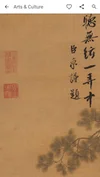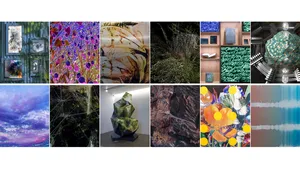Step inside the Forbidden City with precious artworks from the Palace Museum on Google Arts & Culture
For nearly 500 years—from 1420 to 1912—the Forbidden City was home to 24 emperors. Among its most illustrious inhabitants was the Qianlong Emperor, a patron of Confucian arts and culture who, during his 50-year reign in the 18th century, amassed the most important collection of artwork in Chinese history.
The Qianlong Emperor in Ceremonial Armor on Horseback. Giuseppe Castiglione (1688-1766, Chinese name Lang Shining)

This rich collection was built upon by his successors over time and went on to become the centerpiece of the Palace Museum that opened to people outside the imperial court for the first time in 1925. And starting today, anyone with an internet connection can now glimpse inside and view 100 precious artifacts from the Palace Museum on Google Arts & Culture.
The exhibit captures the breadth of rare and valuable works that are on display in the Forbidden City—from calligraphy to ceramics, silk paintings to stone carvings, and jades and other jewels. The Palace Museum collection on Google Arts & Culture covers over 6,000 years of China’s culture and history, and sheds particular light on the Qianlong Emperor’s reign, the traditions and prosperity of the Qing Empire.
One of the collection’s oldest surviving pieces, the Bu Shang Studying, Running Regular Script was made by calligrapher Ouyang Xun to document the philosophical reasoning of one of Confucius’ most distinguished pupils. Zoom into the artwork to appreciate Ouyang’s brushstrokes. This piece was widely documented throughout history, finally entering the imperial collection during the Qianlong Emperor’s reign, who included it in his personal album of splendid calligraphic works.
The Seal of Imperial Sacrifices to Heaven features a knob carved in the form of a crouching dragon and is said to be one of the Qianlong Emperor’s twenty-five most cherished seals, and was used in his worship of Heaven.
From left to right: Bu Shang Studying, Running Regular Script, Ouyang Xun (557-641); Seal of Imperial Sacrifices to Heaven - View 1 and View 2.


The Qianlong Emperor developed a practice of leaving an imprint of his imperial seal on many of his favorite pieces of art. Slowly zoom in to Listening to a Zither, a quintessential piece of court figure-paintings of the Song dynasty, and scroll to the left to find two stamps added by the emperor.
With Google Arts & Culture, you can explore more of the Qianlong Emperor’s most prized artworks that he placed his seal on, such as the Admonitions Scroll, some of which are now found in collections around the world.
Come and discover these gems from the Palace Museum and much more on Google Arts & Culture today, available on desktop, iOS and Android.
Bright Yellow Satin Court Robe with Embroidered Golden Dragons - View 1. This robe was part of the ceremonial dress used by the Qianlong Emperor and is decorated with the twelve imperial symbols that are outlined by round golden threads.
Inksticks with Paintings and Qianlong Emperor's Poems. Each inkstick is embellished with a famous painting on the front and a poem by the Qianlong Emperor on the back.
Gold Cup with Jewel Inlay: Eternal Territorial Integrity. Qing Imperial Workshop. At midnight at the beginning of the new lunar year, the Qing imperial palace would hold a writing ceremony, during which the emperor used the Eternal Territorial Integrity Cup. The emperor would pour auspicious wine into the cup, display it on the table, and write couplets for the Spring Festival by candlelight.
Jade Sculpture of Paulownia Trees Shading Young Ladies - View 1. The underside of this delicate white jade sculpture is engraved with a poem and an inscription—both attributed to the Qianlong Emperor—in praise of the craftsmanship. The two seals read Qian and Long (the two characters of that emperor's reign title), respectively.






